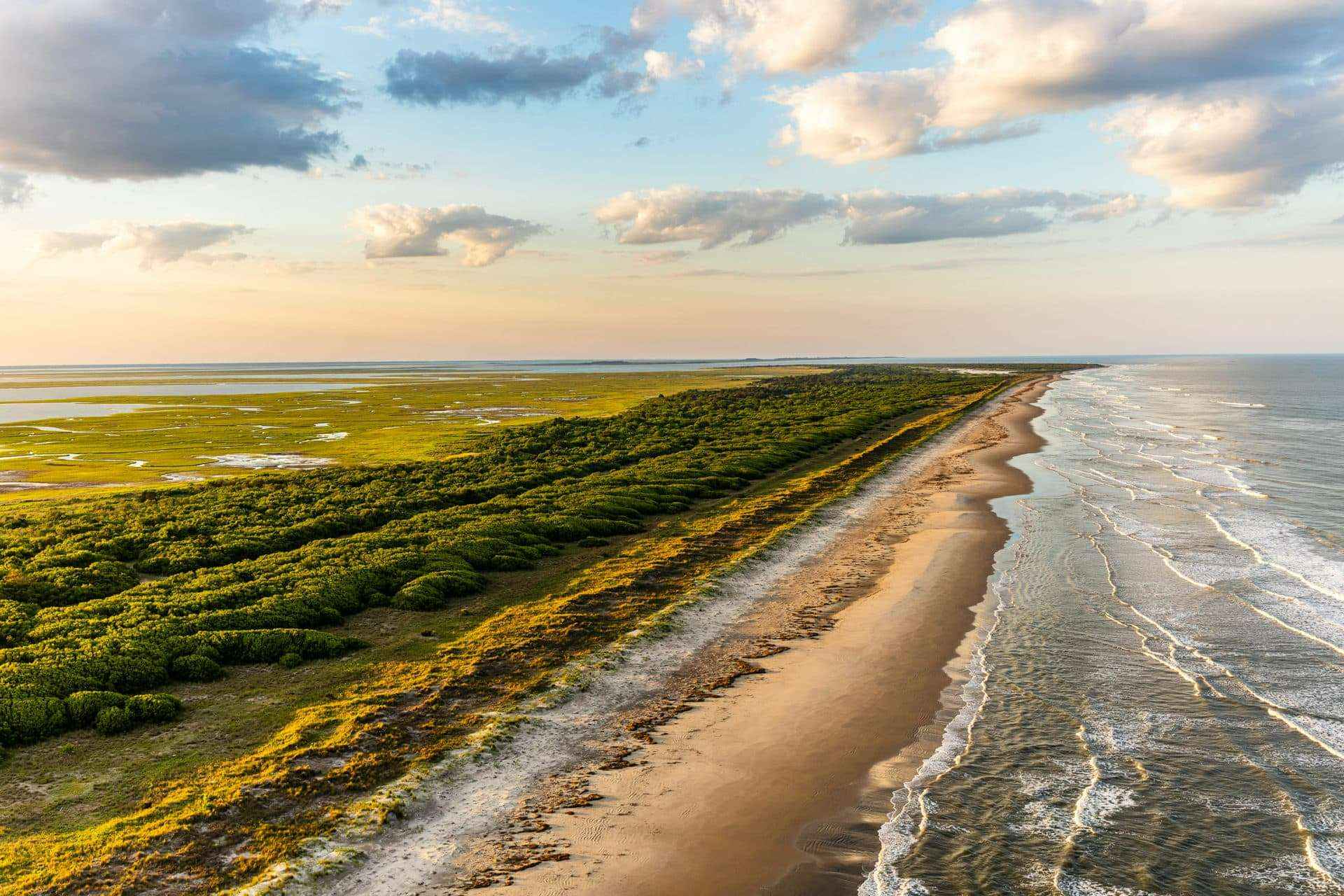
Barrier islands are fascinating geographical formations that can be found all around the world. These slender strips of land, situated parallel to the mainland, act as natural buffers against the forces of the ocean. Not only do they provide protection to the mainland from storms and erosion, but they also serve as important habitats for a diverse range of plants and animals.
In this article, we will delve into the remarkable world of barrier islands and uncover eight mind-blowing facts about these unique landforms. From their formation and migration patterns to their role in mitigating climate change, brace yourself for an exciting journey through some of nature’s most captivating wonders. So, let’s dive in and explore the mesmerizing world of barrier islands!
Key Takeaways:
- Barrier islands are natural defenses against storms, providing protection to coastal communities. They also support diverse ecosystems and offer recreational opportunities, making them important and fascinating geographical features.
- Climate change poses a significant threat to barrier islands, leading to the risk of erosion and potential disappearance. Understanding and protecting these unique landforms is crucial for the future.
Barrier islands are formed by natural processes.
Barrier islands are narrow strips of land that are formed by the natural processes of waves, tides, and currents. These islands are typically found parallel to coastlines and are made up of sand, sediment, and shell debris that washes up from the ocean.
Barrier islands serve as a natural defense against storms.
One of the key roles of barrier islands is to act as a buffer, protecting the mainland from the destructive forces of storms and hurricanes. The dunes and vegetation on these islands help absorb the impact of high waves and storm surges, reducing the potential damage to coastal communities.
Barrier islands are home to diverse ecosystems.
Despite their narrow size, barrier islands are rich in biodiversity. They support a variety of ecosystems, including salt marshes, dunes, lagoons, and tidal flats. These habitats provide crucial breeding grounds for numerous species of birds, fish, and marine mammals.
Barrier islands are constantly changing.
Due to their dynamic nature, barrier islands are constantly shifting and changing shape. The forces of erosion and deposition continually reshape the islands, with sand being transported along the coast and deposited in new locations. This process is known as island migration.
Barrier islands offer recreational opportunities.
Barrier islands are often popular tourist destinations, attracting visitors with their beautiful beaches, clear waters, and abundant wildlife. Activities such as swimming, surfing, fishing, birdwatching, and hiking can be enjoyed on these islands.
Many famous barrier islands exist around the world.
Barrier islands can be found in various parts of the world, each with its own unique characteristics. Examples include the Outer Banks in North Carolina, the Florida Keys, the barrier islands along the Gulf Coast of Texas, and Fraser Island in Australia.
Barrier islands play a crucial role in coastal ecosystems.
These islands provide valuable habitats for numerous plants and animals, including endangered and threatened species. They also help protect the delicate coastal ecosystem by filtering pollutants, reducing erosion, and maintaining a balance between the land and sea.
Climate change poses a significant threat to barrier islands.
The rising sea levels and increased storm intensity associated with climate change pose a major threat to barrier islands. These islands are highly vulnerable to erosion and may face the risk of disappearing or being submerged in the future.
Conclusion
In conclusion, barrier islands are fascinating land formations that hold many secrets and wonders. From their shifting sands and dynamic ecosystems to their crucial role in protecting the mainland from storms, there is much to learn and appreciate about these unique geographical features. Whether you’re exploring their diverse wildlife, enjoying their pristine beaches, or studying their ever-changing landscapes, barrier islands offer a wealth of experiences for nature enthusiasts and scientists alike. So, the next time you find yourself near a barrier island, take a moment to marvel at its beauty and appreciate the intricate processes that shape these remarkable coastal treasures.
FAQs
1. What is a barrier island?
A barrier island is a long, narrow landform that runs parallel to the mainland and protects it from the open sea.
2. How are barrier islands formed?
Barrier islands are formed through a combination of ocean currents, sediment deposition, and sea level changes. Over time, sand and other sediments accumulate, creating the elongated, low-lying islands.
3. How do barrier islands change over time?
Barrier islands are constantly evolving due to natural processes such as erosion and accretion. These changes can be caused by storms, sea level rise, and changes in sediment supply.
4. What makes barrier islands unique?
Barrier islands are unique because of their dynamic nature. They act as a buffer between the ocean and the mainland, and their shifting sands create diverse habitats for a variety of plant and animal species.
5. Are barrier islands vulnerable to storms?
Yes, barrier islands are vulnerable to storms due to their exposed location. However, their natural sand dunes and vegetation help absorb the impact of the waves and provide some protection to the mainland.
6. Can barrier islands be visited?
Yes, many barrier islands are accessible to visitors and offer opportunities for recreation such as swimming, fishing, and birdwatching. However, it is important to respect the delicate ecosystems and follow any regulations or guidelines in place to preserve these natural wonders.
Barrier islands captivate with their mind-blowing facts, but there's more to explore! Uncover the wonders of Sanibel Island, where natural beauty abounds. Dive into the fascinating geography of Georgia's coastal plain, a region rich in history and ecology. For a glimpse into local artistry, don't miss the enchanting creations showcased at Hatteras Island's Arts and Crafts Guild Show. Each destination holds its own unique allure, promising unforgettable experiences and a deeper appreciation for the marvels that surround us. So why not embark on a journey of discovery and let these captivating locations leave you awestruck?
Was this page helpful?
Our commitment to delivering trustworthy and engaging content is at the heart of what we do. Each fact on our site is contributed by real users like you, bringing a wealth of diverse insights and information. To ensure the highest standards of accuracy and reliability, our dedicated editors meticulously review each submission. This process guarantees that the facts we share are not only fascinating but also credible. Trust in our commitment to quality and authenticity as you explore and learn with us.


